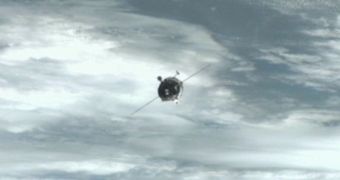On Sunday, a new unmanned Russian capsule managed to dock successfully to the International Space Station (ISS), as the two were flying in low-Earth orbit (LEO). The docking took place some 216 miles (347 kilometers) above Mongolia.
The new mission is an important part of the orbital facility's resupply program, and it also marks the first time when all but one of the available Russian docking ports on the ISS are filled.
In addition to Progress 39, an older cargo spacecraft – Progress 37 – is also docked to the ISS, as are two Soyuz space capsules. The latter act as lifeboats for the six astronauts aboard the space lab.
With the launch of the MRM-2 module, also called Poisk, the number of Russian ports rose from four to five. For comparison, the American shuttles can only dock on a single port.
The Poisk compartment was launched aboard a modified Progress M-MIM2 spacecraft, which was carried to orbit atop a Soyuz-U delivery system.
The module was launched from Launch Pad 1 at the Baikonur Cosmodrome in Kazakhstan, on November 10, 2009.
The new Progress mission was launched Friday September 10, also from Baikonur. It spent two days chasing the ISS in orbit, until it finally docked to it on Sunday, ad around 1158 GMT.
Russian cosmonaut and Expedition 24 commander Alexander Skvortsov was on standby to assist with the docking procedure if anything went south, but his intervention was not needed.
The Progress capsule docked itself flawlessly. The previous mission, called Progress 38, did not go so smoothly, and the astronauts had to take remote control of its functions, to ensure proper docking.
After all the cargo is unloaded from the spacecraft, astronauts generally fill it with garbage and other debris, and then seal it up again.
The capsule is then separated from the $100 billion orbital facility, and remains in orbit for a few extra days, before being redirected so that it burns up in Earth's atmosphere.
In the future, officials at RosCosmos have plans to convert the Progress to a capsule capable of reentering the atmosphere without suffering damage.
The capsule is part of an international program to resupply the ISS, which also features spacecrafts operated by the European Space Agency and JAXA, Space reports.

 14 DAY TRIAL //
14 DAY TRIAL //